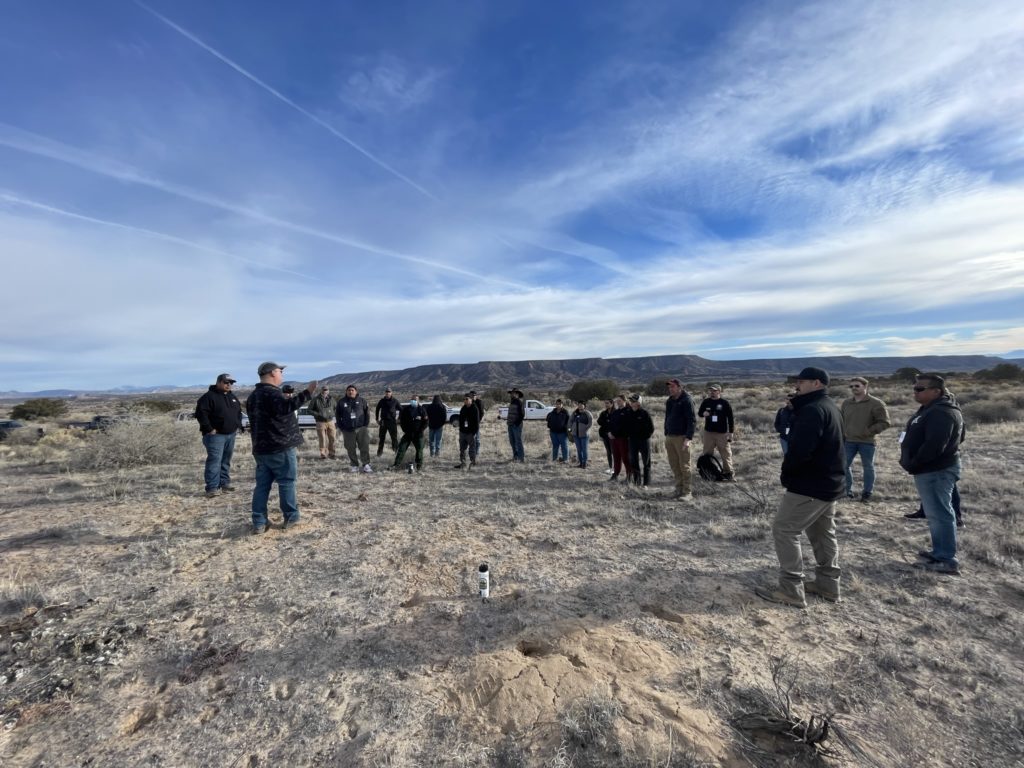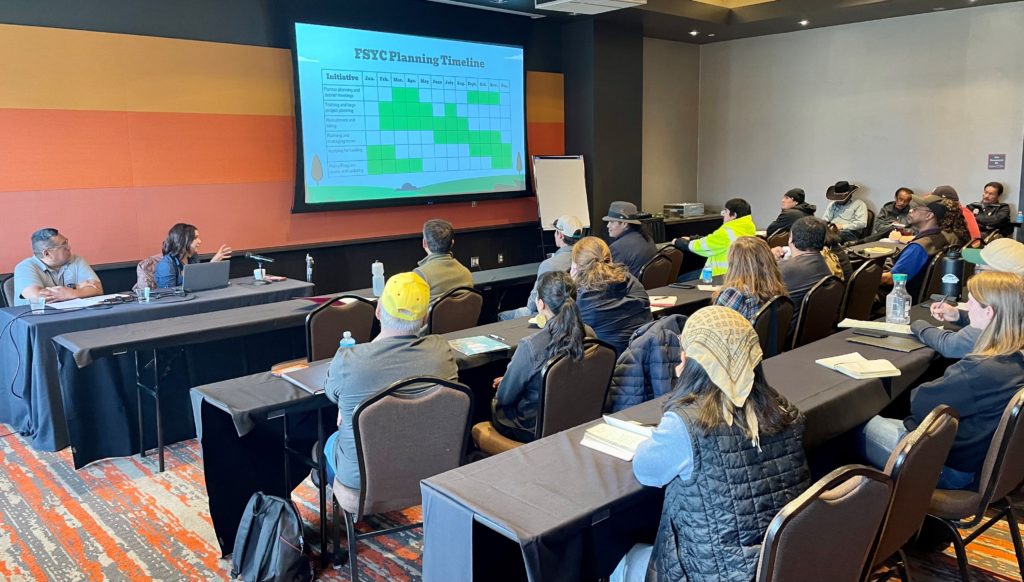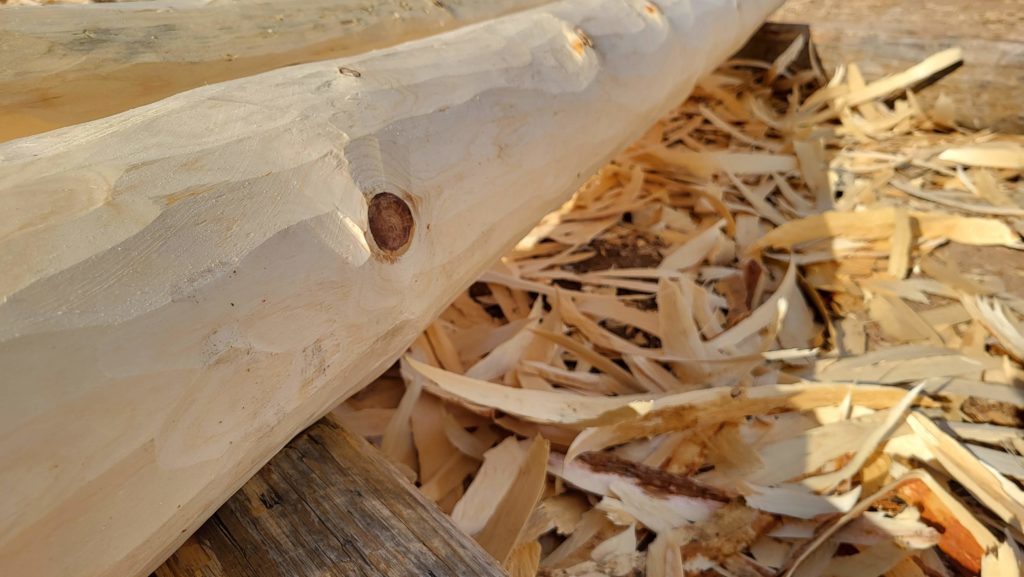New Mexico’s First Annual Tribal Forest and Fire Summit

Santa Ana Field Tour
Written by Rachel Bean, Zander Evans, and Sam Berry
Earlier this month, a first-of-its-kind Tribal Forest and Fire Summit gathered 180 people to create connections for collaboration, learn from each other, and break barriers. The Guild joined Trees, Water, People, The Nature Conservancy, and New Mexico Forestry Division to host the three-day event at Santa Ana Star Casino on the traditional lands of Santa Ana Pueblo. Opportunities and challenges related to Tribal fire and forestry management practices, agreements, funding, and more were featured. The agenda was tailored to offer a variety of experiences and opportunities for discussion, including plenary sessions, long-form workshops, concurrent presentations, and field tours.
After an opening statement and prayer from Santa Ana’s Govenor set the intent for the rest of the summit, attendees split up into two groups for separate forestry and fire workshops. The forestry side touched on various forest management topics, including project planning and funding, use of technology, and reforestation. The fire workshop, led by Sam Berry of the Guild, focused on planning for prescribed burning. This session provided an overview of the Bureau of Indian Affairs (BIA) burn plan process and covered the elements of an NWCG-aligned prescribed burn plan. It set the stage for future discussion of how Tribes can best work with BIA to create projects that are centered on their objectives and accelerate prescribed burning on Tribal Trust lands.

Field tour at Walatowa Timber Industries
The New Mexico Tribal Fire Working Group held their third meeting, after the workshops. The Guild has provided scaffolding for this Tribally centered group as members work to advance prescribed and wildfire issues across the reservations and aboriginal lands of the Tribes, Pueblos, and Tribal Nations. Meeting during the summit allowed new members to join the group and bring new energy and ideas.
Zander Evans, the Guild’s executive director, gave the welcome on the second day of the Summit. He emphasized opportunities for Tribes and Indigenous stewards to take advantage of new funding and policy opportunities. In one example, he spoke of the proposed National Old-Growth Amendment that instructs the Forest Service to “integrate Indigenous Knowledge and respect for the ethic of reciprocity and responsibility to future generations and directs land managers to advance co-stewardship, recognizing the importance of general trust responsibilities, treaty rights, and cultural, religious, and other Tribal interests and practices.” He highlighted the resources available through collaboration and the supporting role that non-Tribal partners must play in advancing Indigenous priorities.

Cora and John presenting on Forest Stewards Youth Corps
John Galvan, Guild board member and Jemez Pueblo Forester, and Cora Stewart, Guild Coordinator, teamed up on day two to share details about the Forest Stewards Youth Corps program at Jemez Pueblo. They showcased the work that Tribal youth complete every summer while learning about environmental stewardship close to home. John and Cora also walked through the history of the Guild’s Youth Corps and what it takes to employ 4-5 young adults every year, including diverse funding sources, a permanent program manager, the creation of programmatic plans, and consistent communication between the Pueblo, the Guild, and other partners. Summit attendees in the room asked insightful questions about the timeline and necessary steps to build their own Youth Corps programs.

A log whose bark was hand peeled at Walatowa Timber Industries
The final day of the summit featured the lessons of the first two days put into action through field trips to nearby stewardship projects. Three available tours included a trip organized by Sam Berry as a follow-up to the first day’s fire-focused workshop and meeting. This trip went to a prescribed burn project in pinyon-juniper shrubland on Santa Ana Pueblo. The second trip went to Walatowa Timber Industries, a Jemez Pueblo owned and operated sawmill selling wood products sourced from small-diameter forest restoration thinning. The third visited a biochar operation and explanation at Sandia Pueblo.
This summit only scratched the surface of the many forestry and fire opportunities and challenges for Tribal communities across New Mexico. It provided a valuable space for community members, practitioners, and researchers to meet, share stories and meals, and exchange information. These three days laid the foundation for both future collaborations and future summits.
Read a press release about the Summit from Trees, Water, People.
